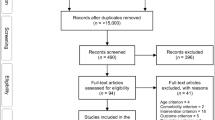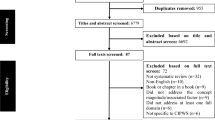Abstract
In Huntington’s disease (HD), irritability and aggressive behavior represent highly prevalent and disabling neuropsychiatric symptoms. However, their structural brain correlates have not been extensively explored. Here, we rated the severity of irritability and aggression (IAs) using the Problem Behaviors Assessment for HD (PBA-s) in 31 early HD participants. The IAs score was computed as the mean severity score for the irritability plus the mean severity aggression PBA-s items. Seventeen patients were classified as IAs (IAs score > 2) and 14 as non-IAs. All participants had available T1-MRI data. A grey matter volume voxel-based morphometry group comparison was performed, using age, motor status, severity of other PBA-s items and disease burden as covariates. Aside from irritability, aggression and obsessive-compulsive behavior, both groups were comparable in terms of other clinical and sociodemographic variables. In the IAs group, a significant reduction of grey-matter volume (GMV) was found in the bilateral caudate, putamen and globus pallidus, left pulvinar nucleus, right superior temporal pole (BA 38), left mid temporal gyrus (BA 21), right inferior temporal gyrus (BA 20) and left medial OPFC (BA 11). Lower GMV in the left pulvinar nucleus was significantly associated with higher anxiety and lower GMV in the left medial OPFC was significantly associated with higher suicidality. In sum, IAs in HD is associated with structural brain damage in a set of key nodes involved in the expression and down-regulation of negative emotions.

Similar content being viewed by others
References
Anderson, S. W., Barrash, J., Bechara, A., & Tranel, D. (2006). Impairments of emotion and real-world complex behavior following childhood- or adult-onset damage to ventromedial prefrontal cortex. Journal of the International Neuropsychological Society : JINS, 12, 224–235. https://doi.org/10.1017/S1355617706060346.
Anderson, K. E., Gehl, C. R., Marder, K. S., Beglinger, L. J., & Paulsen, J. S. (2010). Comorbidities of obsessive and compulsive symptoms in Huntington’s disease. The Journal of Nervous and Mental Disease, 198, 334–338. https://doi.org/10.1097/NMD.0b013e3181da852a.
Benarroch, E. E. (2015). Pulvinar: Associative role in cortical function and clinical correlations. Neurology, 84, 738–747. https://doi.org/10.1212/WNL.0000000000001276.
Bouwens, J. A., van Duijn, E., van der Mast, R. C., Roos, R. A., & Giltay, E. J. (2015). Irritability in a prospective cohort of Huntington’s disease mutation carriers. The Journal of Neuropsychiatry and Clinical Neurosciences, 27, 206–212. https://doi.org/10.1176/appi.neuropsych.14030051.
Callaghan, J., et al. (2015). Reliability and factor structure of the short problem behaviors assessment for Huntington's disease (PBA-s) in the TRACK-HD and REGISTRY studies. The Journal of Neuropsychiatry and Clinical Neurosciences, 27, 59–64. https://doi.org/10.1176/appi.neuropsych.13070169.
Craig, K. J., Hietanen, H., Markova, I. S., & Berrios, G. E. (2008). The irritability questionnaire: a new scale for the measurement of irritability. Psychiatry Research, 159, 367–375. https://doi.org/10.1016/j.psychres.2007.03.002.
Craufurd, D., Thompson, J. C., & Snowden, J. S. (2001). Behavioral changes in Huntington disease. Neuropsychiatry, Neuropsychology, and Behavioral Neurology, 14, 219–226.
Critchley, H. D., Simmons, A., Daly, E. M., Russell, A., van Amelsvoort, T., Robertson, D. M., Glover, A., & Murphy, D. G. (2000). Prefrontal and medial temporal correlates of repetitive violence to self and others. Biological Psychiatry, 47, 928–934.
Damasio, A. R., Grabowski, T. J., Bechara, A., Damasio, H., Ponto, L. L., Parvizi, J., & Hichwa, R. D. (2000). Subcortical and cortical brain activity during the feeling of self-generated emotions. Nature Neuroscience, 3, 1049–1056. https://doi.org/10.1038/79871.
Denson, T. F., Pedersen, W. C., Ronquillo, J., & Nandy, A. S. (2009). The angry brain: Neural correlates of anger, angry rumination, and aggressive personality. Journal of Cognitive Neuroscience, 21, 734–744. https://doi.org/10.1162/jocn.2009.21051.
Eastley, R., & Wilcock, G. K. (1997). Prevalence and correlates of aggressive behaviours occurring in patients with Alzheimer’s disease. International Journal of Geriatric Psychiatry, 12, 484–487.
Fisher, C. A., Sewell, K., Brown, A., & Churchyard, A. (2014). Aggression in Huntington’s disease: a systematic review of rates of aggression and treatment methods. Journal of Huntington’s Disease, 3, 319–332. https://doi.org/10.3233/JHD-140127.
Group HS. (1996). Unified Huntington’s disease rating scale: Reliability and consistency. Huntington Study Group Movement Disorders : Official Journal of the Movement Disorder Society, 11, 136–142. https://doi.org/10.1002/mds.870110204.
Hubers, A. A., et al. (2013). Suicidal ideation in a European Huntington’s disease population. Journal of Affective Disorders, 151, 248–258. https://doi.org/10.1016/j.jad.2013.06.001.
Ito, M., Okazaki, M., Takahashi, S., Muramatsu, R., Kato, M., & Onuma, T. (2007). Subacute postictal aggression in patients with epilepsy. Epilepsy & Behavior : E&B, 10, 611–614. https://doi.org/10.1016/j.yebeh.2007.02.016.
Kingma, E. M., van Duijn, E., Timman, R., van der Mast, R. C., & Roos, R. A. (2008). Behavioural problems in Huntington’s disease using the problem behaviours assessment. General Hospital Psychiatry, 30, 155–161. https://doi.org/10.1016/j.genhosppsych.2007.11.005.
Kloppel, S., et al. (2010). Irritability in pre-clinical Huntington’s disease. Neuropsychologia, 48, 549–557. https://doi.org/10.1016/j.neuropsychologia.2009.10.016.
Lieberman, M. D., & Cunningham, W. A. (2009). Type I and Type II error concerns in fMRI research: re-balancing the scale. Social Cognitive and Affective Neuroscience, 4, 423–428. https://doi.org/10.1093/scan/nsp052.
Maltby, J., Dale, M., Underwood, M., & Simpson, J. (2017). Irritability in Huntington’s Disease: factor analysis of Snaith’s irritability scale. Movement Disorders Clinical Practice, 4, 342–348. https://doi.org/10.1002/mdc3.12424.
Martinez-Horta, S., et al. (2016). Neuropsychiatric symptoms are very common in premanifest and early stage Huntington’s disease. Parkinsonism & Related Disorders, 25, 58–64. https://doi.org/10.1016/j.parkreldis.2016.02.008.
Martinez-Horta, S., Sampedro, F., Pagonabarraga, J., Fernandez-Bobadilla, R., Marin-Lahoz, J., Riba, J., & Kulisevsky, J. (2017). Non-demented Parkinson’s disease patients with apathy show decreased grey matter volume in key executive and reward-related nodes. Brain Imaging and Behavior, 11, 1334–1342. https://doi.org/10.1007/s11682-016-9607-5.
Miller, B. L., Darby, A., Benson, D. F., Cummings, J. L., & Miller, M. H. (1997). Aggressive, socially disruptive and antisocial behaviour associated with fronto-temporal dementia. The British Journal of Psychiatry : The Journal of Mental Science, 170, 150–154.
Monkul, E. S., et al. (2007). Fronto-limbic brain structures in suicidal and non-suicidal female patients with major depressive disorder. Molecular Psychiatry, 12, 360–366. https://doi.org/10.1038/sj.mp.4001919.
Oquendo, M. A., et al. (2003). Positron emission tomography of regional brain metabolic responses to a serotonergic challenge and lethality of suicide attempts in major depression. Archives of General Psychiatry, 60, 14–22. https://doi.org/10.1001/archpsyc.60.1.14.
Paulsen, J. S., Miller, A. C., Hayes, T., & Shaw, E. (2017). Cognitive and behavioral changes in Huntington disease before diagnosis. Handbook of Clinical Neurology, 144, 69–91. https://doi.org/10.1016/B978-0-12-801893-4.00006-7.
Penney Jr., J. B., Vonsattel, J. P., MacDonald, M. E., Gusella, J. F., & Myers, R. H. (1997). CAG repeat number governs the development rate of pathology in Huntington’s disease. Annals of Neurology, 41, 689–692. https://doi.org/10.1002/ana.410410521.
Pessoa, L., & Adolphs, R. (2010). Emotion processing and the amygdala: from a ‘low road’ to ‘many roads’ of evaluating biological significance. Nature Reviews Neuroscience, 11, 773–783. https://doi.org/10.1038/nrn2920.
Reedeker, N., Bouwens, J. A., Giltay, E. J., Le Mair, S. E., Roos, R. A., van der Mast, R. C., & van Duijn, E. (2012). Irritability in Huntington’s disease. Psychiatry Research, 200, 813–818. https://doi.org/10.1016/j.psychres.2012.03.041.
Romanski, L. M., Giguere, M., Bates, J. F., & Goldman-Rakic, P. S. (1997). Topographic organization of medial pulvinar connections with the prefrontal cortex in the rhesus monkey. The Journal of Comparative Neurology, 379, 313–332.
Shoulson, I., & Fahn, S. (1979). Huntington disease: clinical care and evaluation. Neurology, 29, 1–3.
Siever, L. J. (2008). Neurobiology of aggression and violence. The American Journal of Psychiatry, 165, 429–442. https://doi.org/10.1176/appi.ajp.2008.07111774.
Snaith, R. P., & Taylor, C. M. (1985). Irritability: Definition, assessment and associated factors. The British Journal of Psychiatry : The Journal of Mental Science, 147, 127–136.
Tabrizi, S. J., et al. (2009). Biological and clinical manifestations of Huntington's disease in the longitudinal TRACK-HD study: cross-sectional analysis of baseline data. The Lancet Neurology, 8, 791–801. https://doi.org/10.1016/S1474-4422(09)70170-X.
Thompson, J. C., Harris, J., Sollom, A. C., Stopford, C. L., Howard, E., Snowden, J. S., & Craufurd, D. (2012). Longitudinal evaluation of neuropsychiatric symptoms in Huntington’s disease. The Journal of Neuropsychiatry and Clinical Neurosciences, 24, 53–60. https://doi.org/10.1176/appi.neuropsych.11030057.
Tonkonogy, J. M., & Geller, J. L. (1992). Hypothalamic lesions and intermittent explosive disorder. The Journal of Neuropsychiatry and Clinical Neurosciences, 4, 45–50. https://doi.org/10.1176/jnp.4.1.45.
Van den Stock, J., De Winter, F. L., Ahmad, R., Sunaert, S., Van Laere, K., Vandenberghe, W., & Vandenbulcke, M. (2015). Functional brain changes underlying irritability in premanifest Huntington’s disease. Human Brain Mapping, 36, 2681–2690. https://doi.org/10.1002/hbm.22799.
van Duijn, E., Kingma, E. M., & van der Mast, R. C. (2007). Psychopathology in verified Huntington's disease gene carriers. The Journal of Neuropsychiatry and Clinical Neurosciences, 19, 441–448. https://doi.org/10.1176/jnp.2007.19.4.441.
van Duijn, E., Reedeker, N., Giltay, E. J., Eindhoven, D., Roos, R. A., & van der Mast, R. C. (2014). Course of irritability, depression and apathy in Huntington's disease in relation to motor symptoms during a two-year follow-up period. Neuro-Degenerative Diseases, 13, 9–16. https://doi.org/10.1159/000343210.
Vaquero, L., et al. (2017). Cocaine addiction is associated with abnormal prefrontal function, increased striatal connectivity and sensitivity to monetary incentives, and decreased connectivity outside the human reward circuit. Addiction Biology, 22, 844–856. https://doi.org/10.1111/adb.12356.
Vytal, K., & Hamann, S. (2010). Neuroimaging support for discrete neural correlates of basic emotions: a voxel-based meta-analysis. Journal of Cognitive Neuroscience, 22, 2864–2885. https://doi.org/10.1162/jocn.2009.21366.
Walker, F. O. (2007). Huntington’s disease. Lancet, 369, 218–228. https://doi.org/10.1016/S0140-6736(07)60111-1.
Ward, R., Calder, A. J., Parker, M., & Arend, I. (2007). Emotion recognition following human pulvinar damage. Neuropsychologia, 45, 1973–1978. https://doi.org/10.1016/j.neuropsychologia.2006.09.017.
Funding
The present study was partially funded by a Spanish Government Grants (PI17/001885).
Author information
Authors and Affiliations
Corresponding author
Ethics declarations
Conflict of interest
Saul Martinez-Horta, Frederic Sampedro, Andrea Horta-Barba, Jesus Perez-Perez and Beatriz Gomez-Anson declare that they have no conflict of interest.
Javier Pagonabarraga: Has received honoraria for lecturing or consultation from Boehringer Ingelheim, UCB, Allergan, Ipsen, and Lundbeck.
Jaime Kulisevsky: Has received honoraria for lecturing or consultation from the Michael J Fox Foundation, Merck Serono, AbbVie, Boehringer Ingelheim, UCB, Zam bon, MSD, Italfarmaco, General Electric, Roche and Lundbeck.
Informed consent
All procedures followed were in accordance with the ethical standards of the responsible committee on human experimentation (institutional and national) and with the Helsinki Declaration of 1975, and the applicable revisions at the time of the investigation. Informed consent was obtained from all patients for being included in the study.
Additional information
Publisher’s note
Springer Nature remains neutral with regard to jurisdictional claims in published maps and institutional affiliations.
Rights and permissions
About this article
Cite this article
Martinez-Horta, S., Sampedro, F., Horta-Barba, A. et al. Structural brain correlates of irritability and aggression in early manifest Huntington’s disease. Brain Imaging and Behavior 15, 107–113 (2021). https://doi.org/10.1007/s11682-019-00237-x
Published:
Issue Date:
DOI: https://doi.org/10.1007/s11682-019-00237-x




